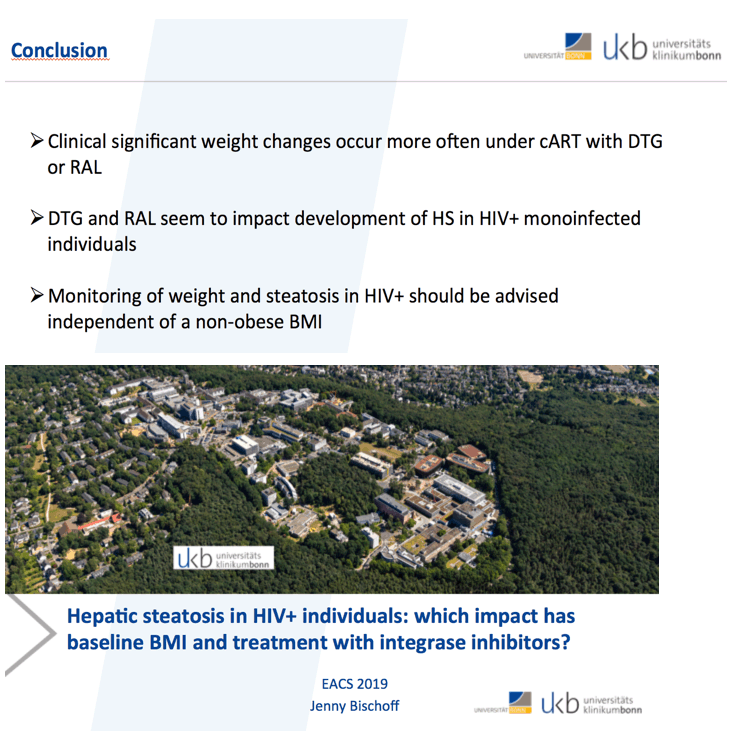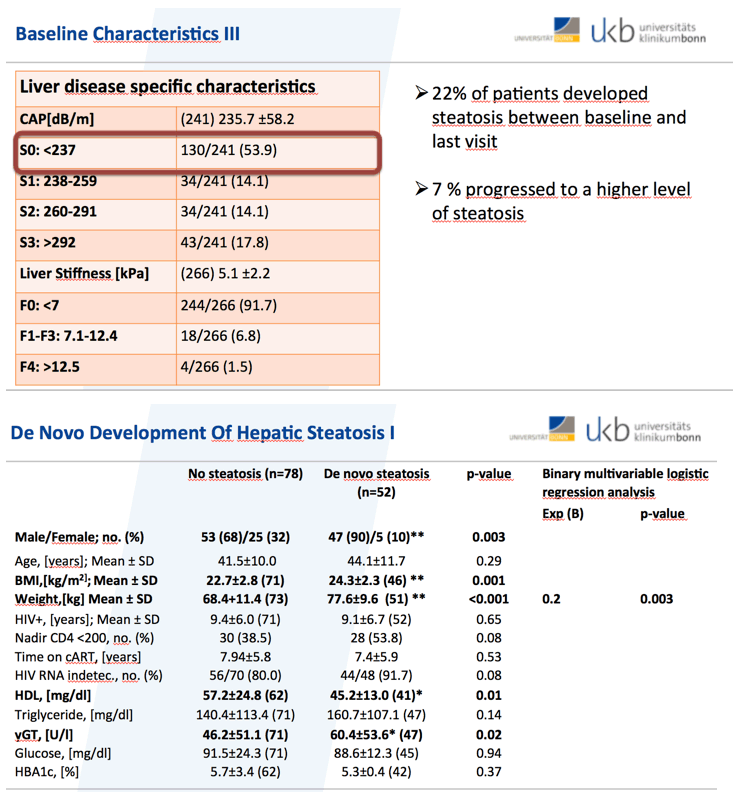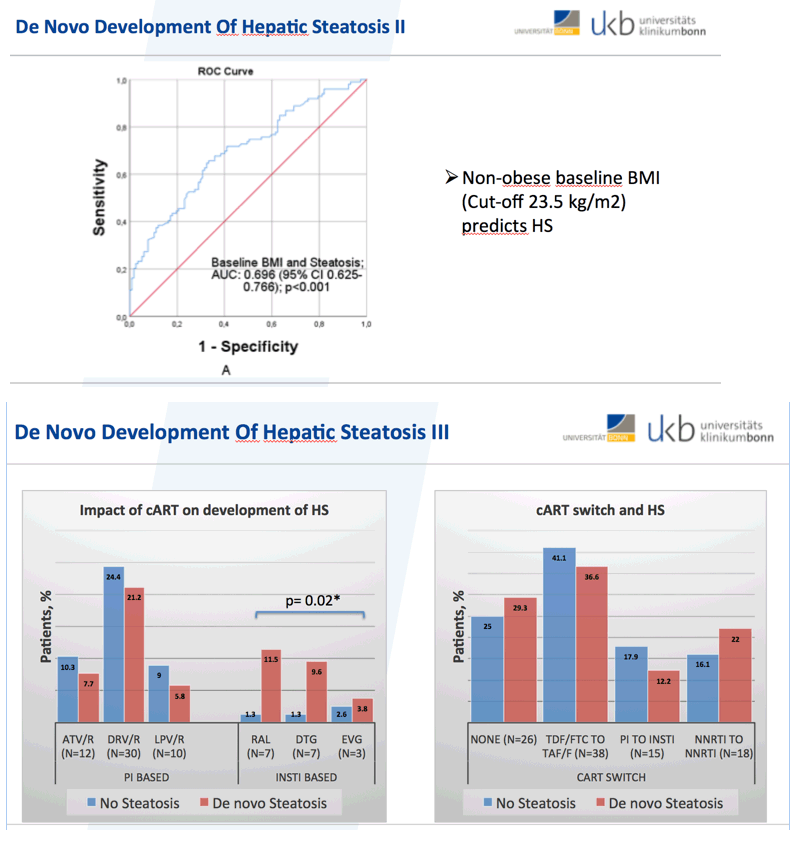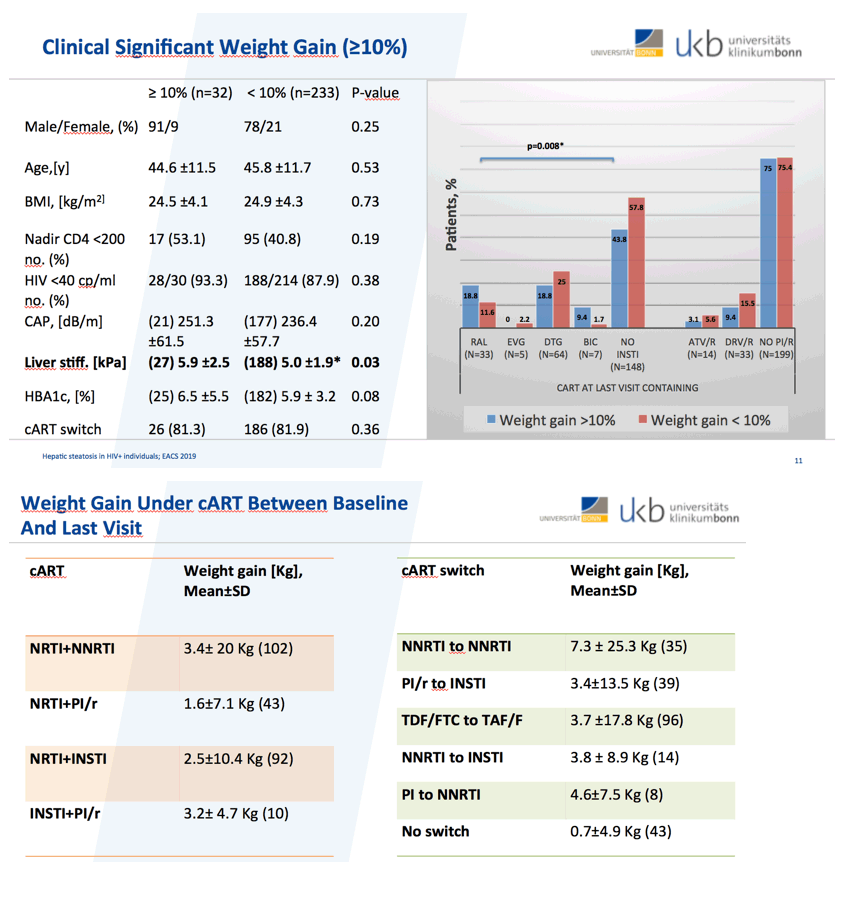 |
 |
 |
| |
Hepatic steatosis in HIV+ individuals: which impact
has baseline BMI and treatment with integrase inhibitors?
|
| |
| |
EACS 2019 Basel Reported by Jules Levin
J. Bischoff1, C. Schwarze-Zander1,2, C. Boesecke1,2, J.-C. Wasmuth1,2, R. Mohr1, K. van Bremen1, L. Dold1,2, M. Praktiknjo1, C. Jansen1, J.K. Rockstroh1,2, J. Trebicka3 1Bonn University Hospital, Bonn, Germany, 2German Center for Infection Research (DZIF), Partner Site Bonn-Cologne, Bonn, Germany, 3University Hospital Frankfurt, Frankfurt, Germany
Purpose: The natural history of non-alcoholic fatty liver disease (NAFLD) in HIV-infected individuals is still not fully understood and risk factors remain to be determined. This cohort study analyses factors associated with progression of hepatic steatosis (HS) in HIV-positive patients.
Method: This single-center longitudinal observational study enrolled 432 HIV-positive patients between August 2013 to July 2017. Liver stiffness and HS were assessed yearly by transient elastography using an M-probe of FibroScan (Echosens, Paris, France). Primary endpoints were progression of HS or de novo development of HS during the study period assessed by CAP values.
Results: Patients with underlying fibrosis (≥7,1 kPa) or steatosis (≥238 dB/m) at baseline were significantly older (no fibrosis/no HS : 41.6±11.4 years vs HS/no fibrosis: 48.2±9.5 years; p< 0.001 and vs fibrosis: 51.8±12.9 years; p = 0.01) and had a higher baseline BMI (no fibrosis/no HS: 23.0±2.8 vs no fibrosis/HS: 25.6±3.4; p< 0.001 and vs fibrosis: 25.1±3.3; p= 0.03) than those without HS and fibrosis. AUC of BMI was 0.753 (95% CI 0.694-0.813, p< 0.001) revealing a cut-off value of 23.5kg/m2 associated with HS. Interestingly, those patients being treated with Integrase Inhibitors (INSTI) (n=88) showed significantly higher CAP values at their last visit than those receiving alternate treatment regimens (PI/r n=50; NNRTI n=84) (243dB/m vs. 268dB/m; p=0.01). Moreover, gain of weight over the study period (mean study period 30,8±8.8 and 30.1±8.8 months; 2.4±7.8kg vs. 0.5±12.0kg, p=0.007), BMI (25.9±4.8kg/m2 vs 24.6±4.3kg/m2; p=0.009) and weight (81.5±15.9kg vs 75.8±17.5kg; p=0.004) at last visit were significantly higher in these patients, indicating an impact of INSTIs on body weight and hereby on development and progression of HS.
Conclusion: This is the first observational longitudinal study showing, that hepatic steatosis develops in HIV-positive individuals despite a non-obese BMI (>23.5kg/m2). Moreover, we detected a significant effect of INSTIs on body weight and HS.






|
| |
|
 |
 |
|
|